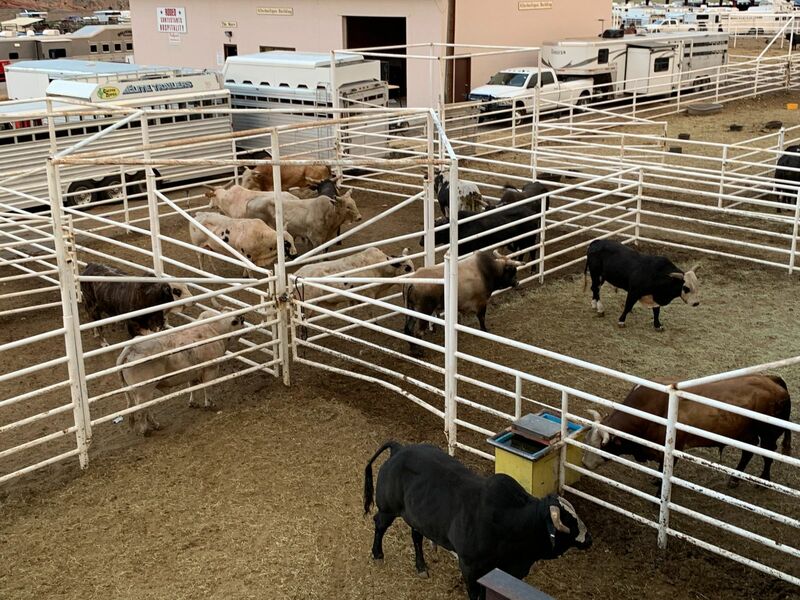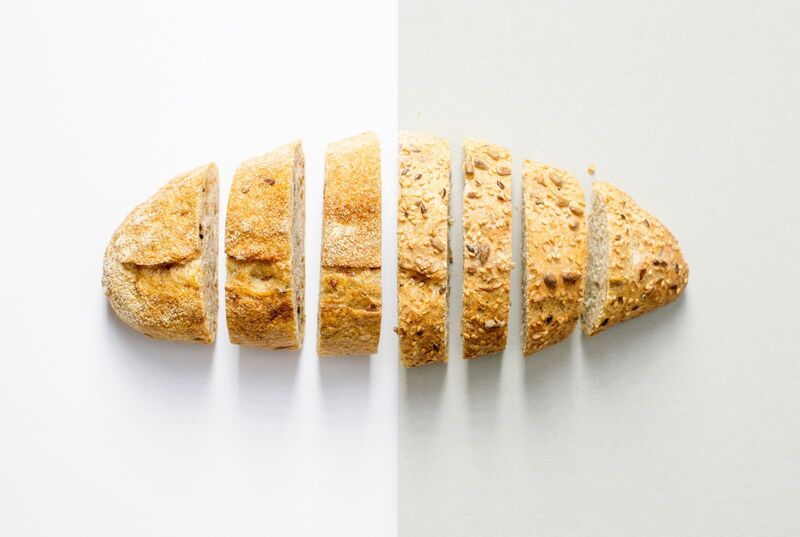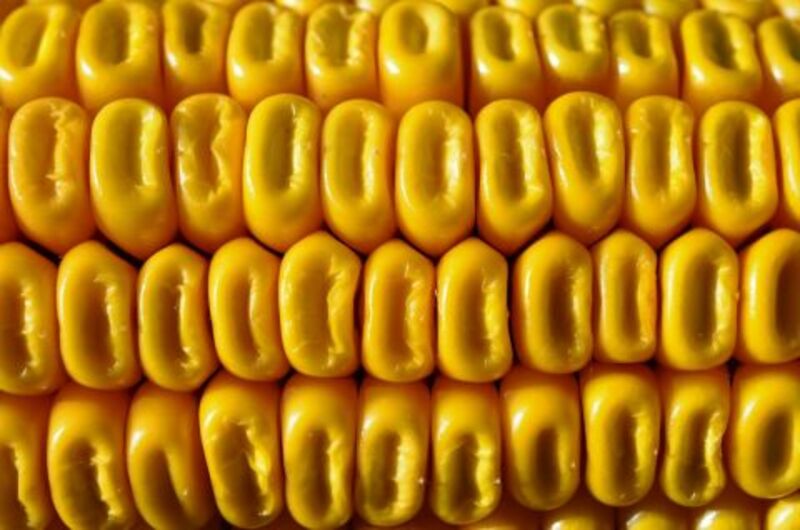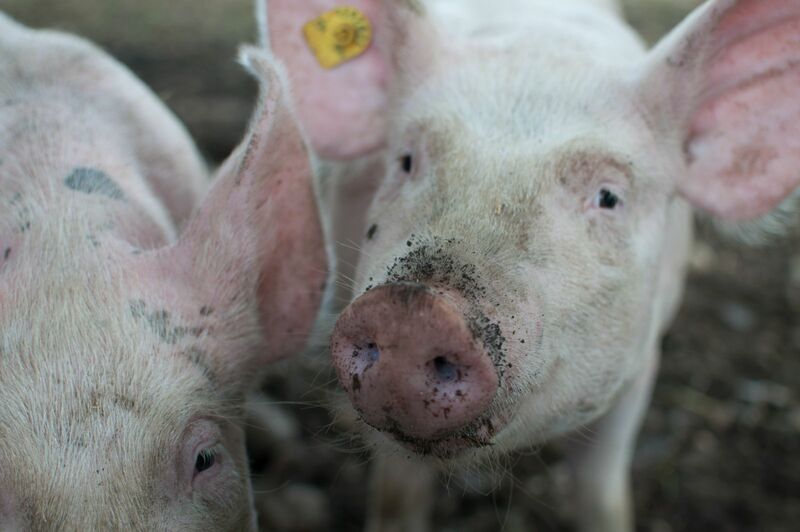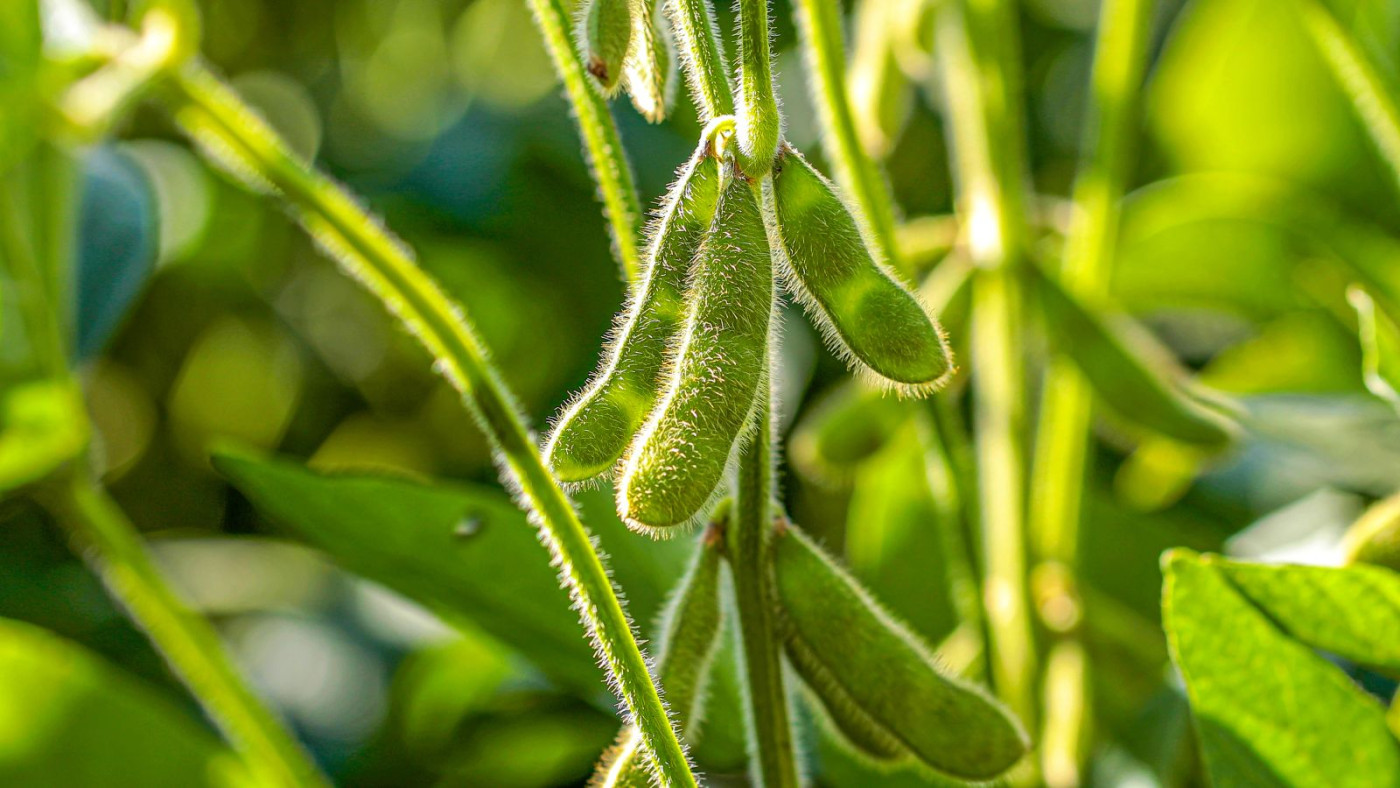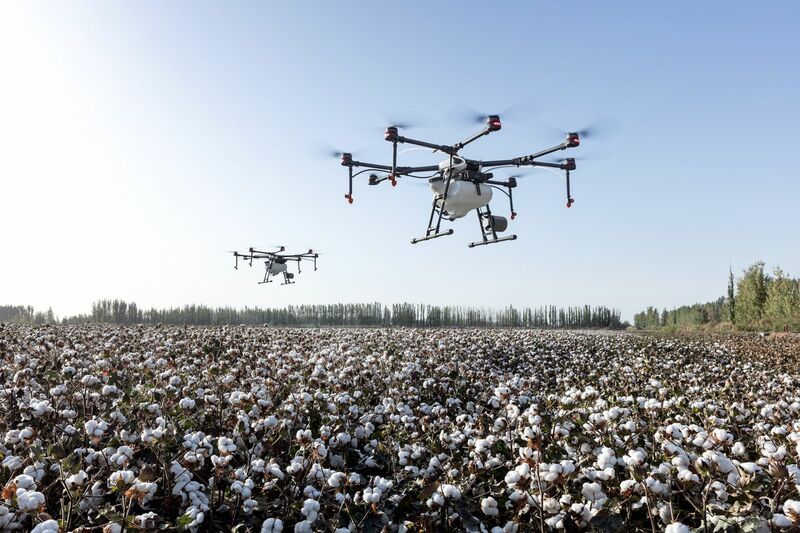This morning I was interviewed by Michelle Rook on AgWeb's Markets Now. I shared my thoughts about the downtrend in the soybean, corn, and wheat markets. I also spoke about interest rates, the stock market, and the cattle market. WATCH THE INTERVIEW HERE.
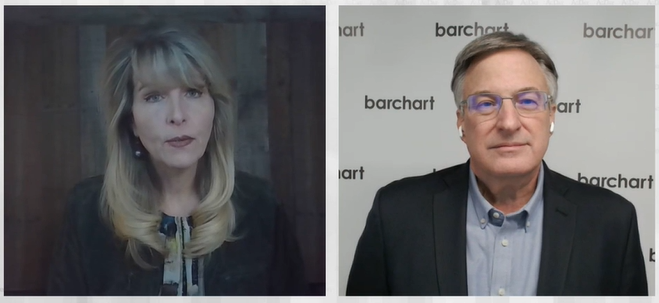
Michelle Rook: Welcome to Markets Now. I'm Michelle Rook, with Darin Newsom, Senior Market Analyst with . We're seeing a lot of red on the board again this morning, with the exception, I believe, of Minneapolis wheat. Savings have tried to go back and forth between positive and negative territory, and the cattle market right now is trading just a little bit higher.
Darin, I want to talk about the grain trade. First of all, corn making more new contract lows here. How much downside risk if we close below these lows here today? We're just hanging on by a thread, it seems.
Darin Newsom: Yes, interesting start to the day, Michelle, and I'll have to ask you, you've got the quotes in front of you, have we seen March take out $4.40 and May take out its nearest round number? The same with July here early this morning. I don't have my quote screens in front of me.
Michelle: March is below $4.40. The May contract is at $4.50 right now.
Darin: Okay. Yes, going back to, if we just use the very characteristic round number reliance, March going through $4.40, from a technical point of view, it just opens up the door to a test of $4.30. Corn likes to go from round number to round number. Longer term, what we're seeing in the cash index, if we look at the intrinsic value of the market, it continues to tell us there's plenty of supply right now to meet demand. We're in a downtrend. It's going to continue to grind lower. It looks like there's still a good deal of downside to the cash index, not only in corn, but in soybeans as well.
Michelle: Right. Talk a little bit about the stocks-to-use ratio that you are calculating, and how you're getting there, and what that really senses or means for this market.
Darin: Yes, there's two ways of thinking about stocks-to-use. There's the right way, and then there's the way that everybody else does when they use USDA's imaginary numbers. If we look at the cash index and we apply basic economics 101, and we consider that market price is where the juncture of supply line and demand line meets, without knowing what supply is, without knowing what demand is, because we don't know those numbers, and we just know what the cash price is, we can create a correlation back to available stocks-to-use, not ending stocks-to-use, but available stocks-to-use.
As we watch this number, we can pull them up every day, at whatever time we want, and we can see that it's been getting larger. In fact, soybeans just went above 10%. They hit 10.1%, the largest in years. I believe corn's gone up to 12.5%, 12.6%, or something like that. Again, so we know, we've got more supplies, at least in corn. We've got less supplies in soybeans.
That's where it really gets interesting, is we know we have less supplies in soybeans, but the stocks-to-use, the available stocks-to-use, continues to go up. Why? There's no demand. We just don't have any demand for US supplies at this point.
Michelle: At the same time, we see funds selling. In fact, in the corn, open interest has been going up. It's new selling, right?
Darin: That's correct. Why wouldn't funds sell? If I had a fund, I'd be selling. Again, if I look at the real fundamentals in the market, and not the imaginary ones that everybody wants to talk about. If we look at the real fundamentals of the market, with basis, and cash, and future spreads, it tells me I'd be comfortable being short the market here. If I've got a good short position on, I can add to it. Because there's really no fear in this market at this point. There's no one stepping in, just all of a sudden, to start buying and turn this thing around.
Yes, we're making some export sales. We're still moving some corn in particular. By and large, as I said, there's plenty of supplies to meet demand. Available stocks to use continue to go up. If I'm a fund, I'm going to continue to sell. As you said, we can see that, particularly in the corn market, with the increase in open interest over the last number of weeks and months.
Michelle: While demand is actually improved in corn, Darin, it's just not improved enough to whittle through this big carryover situation, right?
Darin: Yes, that's the thing. Again, we don't know what our supplies are. We don't know what actual demand is. We can see what shipments are. That's basically about all we've got as far as information. In corn, exports are the third largest demand category out of the three. It's not a huge deal. We can see what the numbers are. By and large, we don't know the numbers, but we do know the cash price. It does tell us exactly what you just said—supplies are large enough. Whatever supplies are, they're large enough to fill demand at this point.
Michelle: Wheat market yesterday making new contract lows in Kansas City and Minneapolis Wheat. I think we took out those lows in Kansas City Wheat again this morning. That market, what are we seeing there? Is the HRW Wheat under pressure just because we have had some moisture now in some of those HRW areas?
Darin: Even though we're not seeing a lot of open interest increase or trade volume in the July or the new crop hard red winter, I do believe that's where the attention is. They're looking at these winter storms. They're looking at the snow that's moved across the Southern Plains, parts of the Central Plains. In the Chicago market, same situation with the July contract as snows move across the Midwest and the Ohio Valley in that area.
Yes, I do think they're looking at, whatever the crop turns out to be, it certainly seems to be getting bigger as we get deeper into winter, simply because it's getting better moisture.
Michelle: Yes. Darin, all of these grains though, everybody is super bearish right now. Sometimes you turn a market when the news gets the worst. What's going to change the sentiment of this market? What is the one thing that could change this attitude?
Darin: Oddly enough, that's the latest piece that I wrote for and posted it here this morning. There is one thing, the most bullish factor for the grain sector at this point is how large the net short future's position is by funds. Even if nothing changes fundamentally, the funds could decide just to get out. We've got long-term uptrends in not just US stock indexes, but in stocks, in global stocks as well.
If they just want to move out of commodities because there's really nothing fundamentally keeping them in commodities at this point, if they just want to continue to move out of commodities, they could start covering some of the short positions in corn, soybeans, and wheat. If that's the case, that could lift these markets again with no change whatsoever to the fundamentals as we read them right now.
Michelle: You don't think we need a catalyst to get them to peel out of or puke out of them shorts?
Darin: No, I just don't. Again, a black swan event could happen at any time. That's why they're black swan events—we can't see them coming. They could happen. Could I picture in my mind what that might be? No, because fundamentally, if we just take it on pure fundamentals, there's just nothing out there right now that's going to change these things. It's not to say that there isn't an event that's going to happen that all of a sudden changes the fundamentals and gives funds an actual catalyst to start doing it other than they just want to move investment money to another arena.
Michelle: The other thing that moved the market yesterday and maybe has spilled over a little bit is, we've got interest rate talks going on amongst the folks at the World Economic Summit. Then we had a lot of China economic news out that was pretty negative. Do you think those things-- How do they play into this market?
Darin: The China economic news is about as reliable as any USDA data that we've got going on. We can take that for what it's worth. As far as the Davos meeting, I don't read anything into that. It's just a place for the rich and famous to get together and see and be seen. They do a lot of talking, but nothing ever really comes from that.
What I find more interesting is, if we look at what the FOMC governors, the Fed governors here in the United States are saying, what some of the officials in Europe are saying, there's mixed messages coming out right now. We've been seeing a good deal of front-running over the last couple of years, which I don't mind, to be honest. We're seeing some mixed messages with some governors saying, "Hey, look, we're not going to see the rate cuts that everyone's expecting." Then the next one comes out and says, "Yes, look for rate cuts here in 2024." Some are talking about rate hikes.
It's a real mix right now. I think the markets are reflecting that. We look at a lot of choppiness right now after the US stock index has extended their rallies. Now they've gotten a bit choppy up here. I don't see it as overly bearish as so many other talking heads do. To me, it's just a bit of an indecision at this point. Here's where we actually need another catalyst to start pushing it higher because we have reached such lofty levels.
Michelle: Yes, it feels like the market really did get ahead of itself there. Yes, no doubt. What about the cattle market? We've had some inclement weather. Obviously, that is pushbox beef values up, but we're also heading into a cattle and feed report. A little bit higher today. Is that just some squaring ahead of the report, you think?
Darin: I think so. Again, I don't get it, but I've been around long enough to realize that's probably what it is. These numbers are as of January 1st, so they're at least a month old, if not more than that by the time they're released. Yet a lot of folks want to get excited about them. We've been able to see what's going on. We were able to see what went on during December with the spreads.
If we want to look at the Feb-April, April-June, June-August spreads, it tells us not only what was placed, what was marketed, what we're looking at for cattle and feed down the road. We already have a good idea, but folks still want to-- some folks want to trade it, some folks want to watch it closely. Yes, it is what it is. It's old numbers. They will be released, and some folks are wanting to square their positions ahead of that. I don't understand why. Right now, I think the biggest hurdle in the cattle market is that cash just isn't trading. It isn't moving. Boxed beef is flying, again, most likely from weather. The actual cash market for live cattle just isn't moving much.
Michelle: Yes, no doubt we'll be awaiting that for sure. All right, thanks for joining us, Darin Newsom—Senior Market Analyst with . That's Markets Now.
On the date of publication, Darin Newsom did not have (either directly or indirectly) positions in any of the securities mentioned in this article. All information and data in this article is solely for informational purposes. For more information please view the Disclosure Policy here.
Disclaimer: The copyright of this article belongs to the original author. Reposting this article is solely for the purpose of information dissemination and does not constitute any investment advice. If there is any infringement, please contact us immediately. We will make corrections or deletions as necessary. Thank you.

